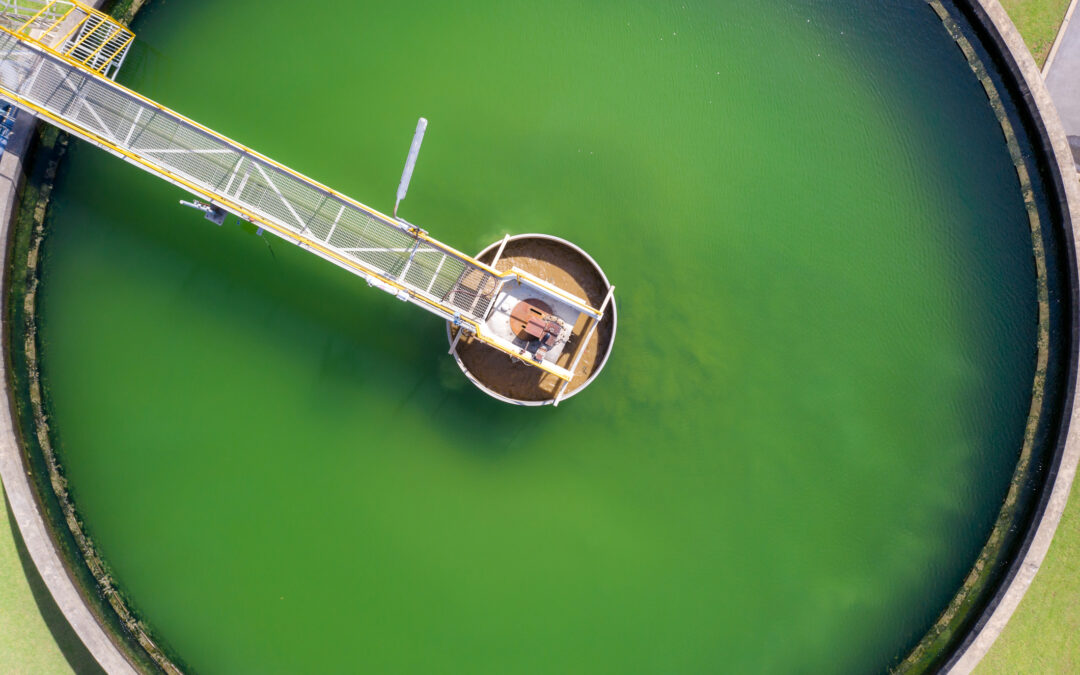Stop Algae Growth in Clarifiers by Stopping Phosphorus Release
It is spring, and warmer weather often means it is time to break out the scrub brush for the clarifier. You may feel it is unavoidable, that the algae will grow and there is nothing you can do but scrub it off. However, if you have a low phosphorus effluent limit and are using a traditional aluminum or iron-based coagulant to remove phosphorus in the wastewater, one small change and you can put the scrub brush away.
Clarifiers in summer – ideal for algal growth
Algae needs a few things for optimal growth, and the clarifier provides them.
- Sunlight: Your clarifier is probably out in the open, in full sun, all day.
- Quiescent water conditions: For settling, you want the water surface to be as still as possible.
- Nutrients: Nitrogen, yes, but most important is phosphorus.
But you use a coagulant, so why does your clarifier have phosphorus?
The problem is those traditional coagulants can’t hold on to the phosphorus. Under the still conditions of a settling clarifier, the dissolved oxygen (DO) declines, creating an anaerobic environment. This decline in DO can be quite rapid in warmer water because the maximum oxygen saturation concentration is already low, and the bugs in the sludge consume more oxygen in warmer temperatures. This anaerobic condition leads to the release of phosphorus from the iron or aluminum-based floc, much like what happens in the sediments at the bottom of a stratified lake in the summer. The bond between the aluminum or ferric and the phosphate just isn’t strong enough to hold it.
The solution is a stronger coagulant, one that binds phosphorus and doesn’t let go,
Neo WaterFX doesn’t just trap phosphorus in a gelatinous floc, ready to release it at the first drop in DO. WaterFX binds tightly with phosphate to form a dense, crystalline precipitate. Most importantly, it STAYS BOUND even under conditions of low dissolved oxygen. With Water FX, there is no phosphorus release, and without phosphorus, algae just won’t grow.
Are you ready to skip the scrub brush?
Your operators have better things to do than scrub clarifier weirs. If you are ready to skip the scrub brush (and save money overall), check us out. Or take a simple 14-question survey to see if WaterFX might be right for your operations.
We promise, your operators won’t miss the brush.



